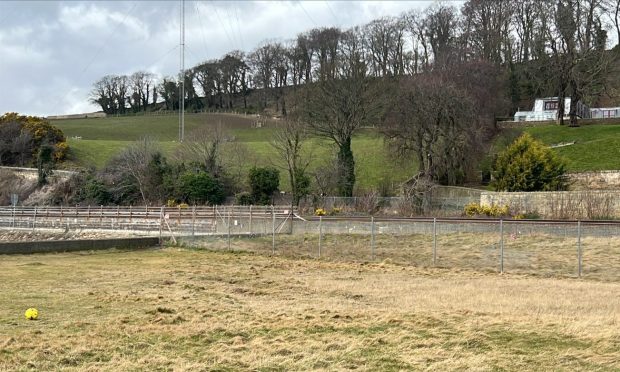Health chiefs have warned of an organism harmful to both humans and animals which could be present in the kingdom’s watercourses.
NHS Fife said a blue-green algae called cyanobacteria could be present in rivers, burns, lochs, reservoirs and ponds across the region throughout the summer months.
People who come into contact with the substance can develop rashes, eye irritation, sickness and diarrhoea. It is especially harmful to small animals such as dogs.
It comes after Andrea Mclellan told The Courier she believes her dog Benji died after being poisoned by a blue-green algae near her home in Cupar.
And now NHS Fife has warned dog-walkers to be on the look-out for the organism, and to avoid letting their pets go near water which could be affected.
The health board said the impact on dogs “is significant”.
Blooms of the algae are common in watercourses affected by agricultural, domestic or industrial “discharges” throughout summer.
A statement from NHS Fife reads: “NHS Fife is issuing a reminder to people to be on the lookout for blooms of potentially hazardous blue-green algae (also known as Cyanobacteria) in the region’s waterways.
“Blue-green algae are tiny organisms which develop naturally in lochs, ponds, reservoirs, rivers and in the sea.
“They are a common seasonal occurrence and waters which have been affected by agricultural, domestic or industrial discharges are most at risk of developing the algae.
“In still waters, the algae can multiply during the summer to such an extent that they discolour the water making it appear green, blue-green or greenish brown.
“Shoreline mats of blue-green algae may appear and are usually coloured brown to black.
“Sometimes a scum may form on the surface of the water. This scum can appear in different places at different times, but is most commonly found near the shoreline.”
The statement adds: “People and animals can be affected as a result of direct contact with water affected by blue-green algae and NHS Fife is advising the public, especially dog owners taking their animals for a walk to be alert to the blooms as temperatures rise.
“Those who accidentally swallow affected water can suffer from complaints such as skin rashes, eye irritation, vomiting, diarrhoea, or pains in muscles and joints. These symptoms are usually mild, but in some cases, can be severe.
“The risk posed by blue-green algae to small animals like dogs is significant over the summer months as they tend to drink more water in the heat and may eat shoreline algal crusts.
We're reminding people to be on the lookout for blue-green algae in Fife's waterways.
People and animals can be affected as a result of contact with affected water and we're advising the public, especially dog owners, to be alert to the blooms.
📲https://t.co/yWriVDbhar pic.twitter.com/UUeIk2OGAG
— NHS Fife (@nhsfife) June 10, 2020
“Where applicable, dog owners should prevent their pets from coming into contact with water which could be affected.
“Fish caught in waters affected by blue-green algae should not be eaten and should not be fed to pets.”










